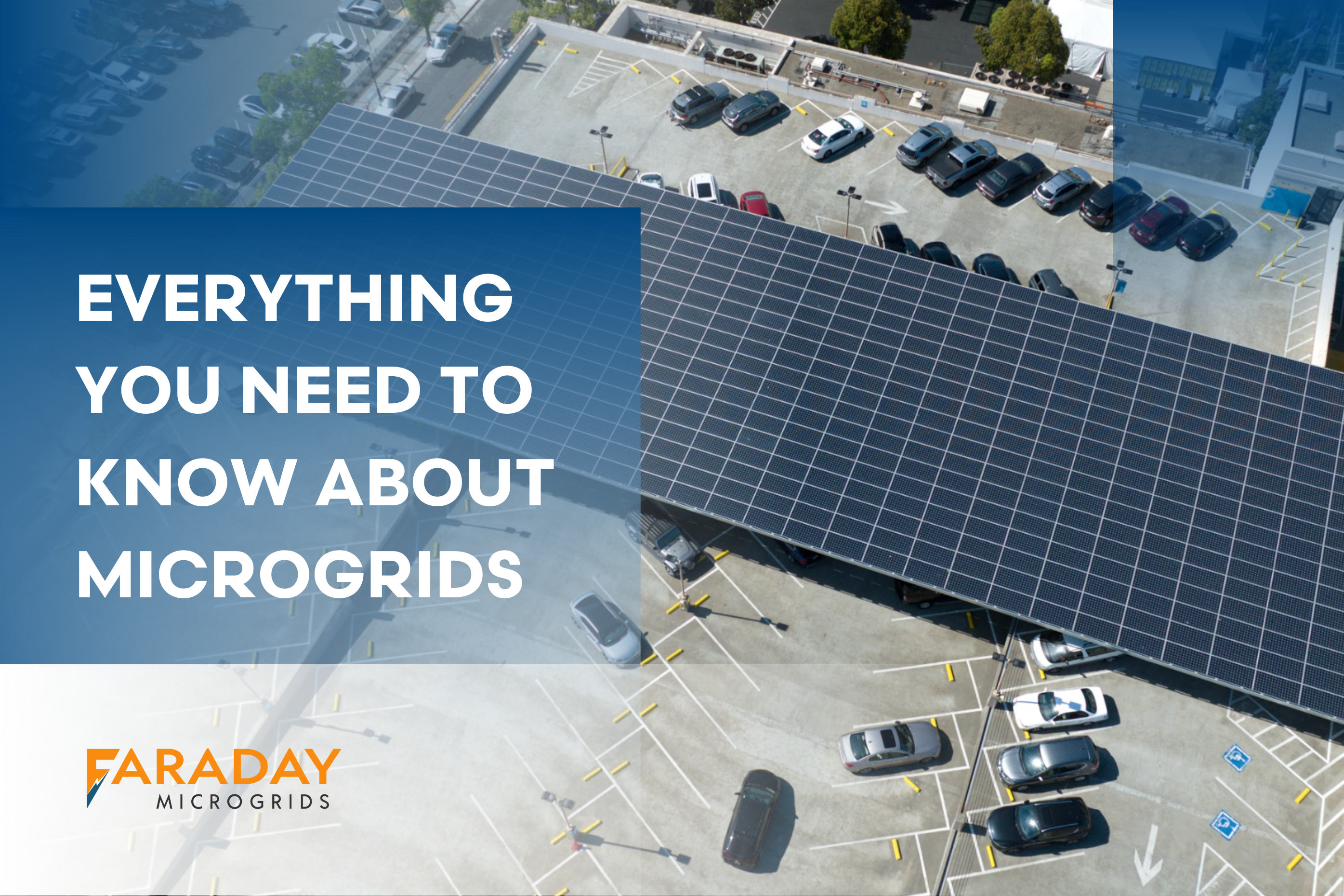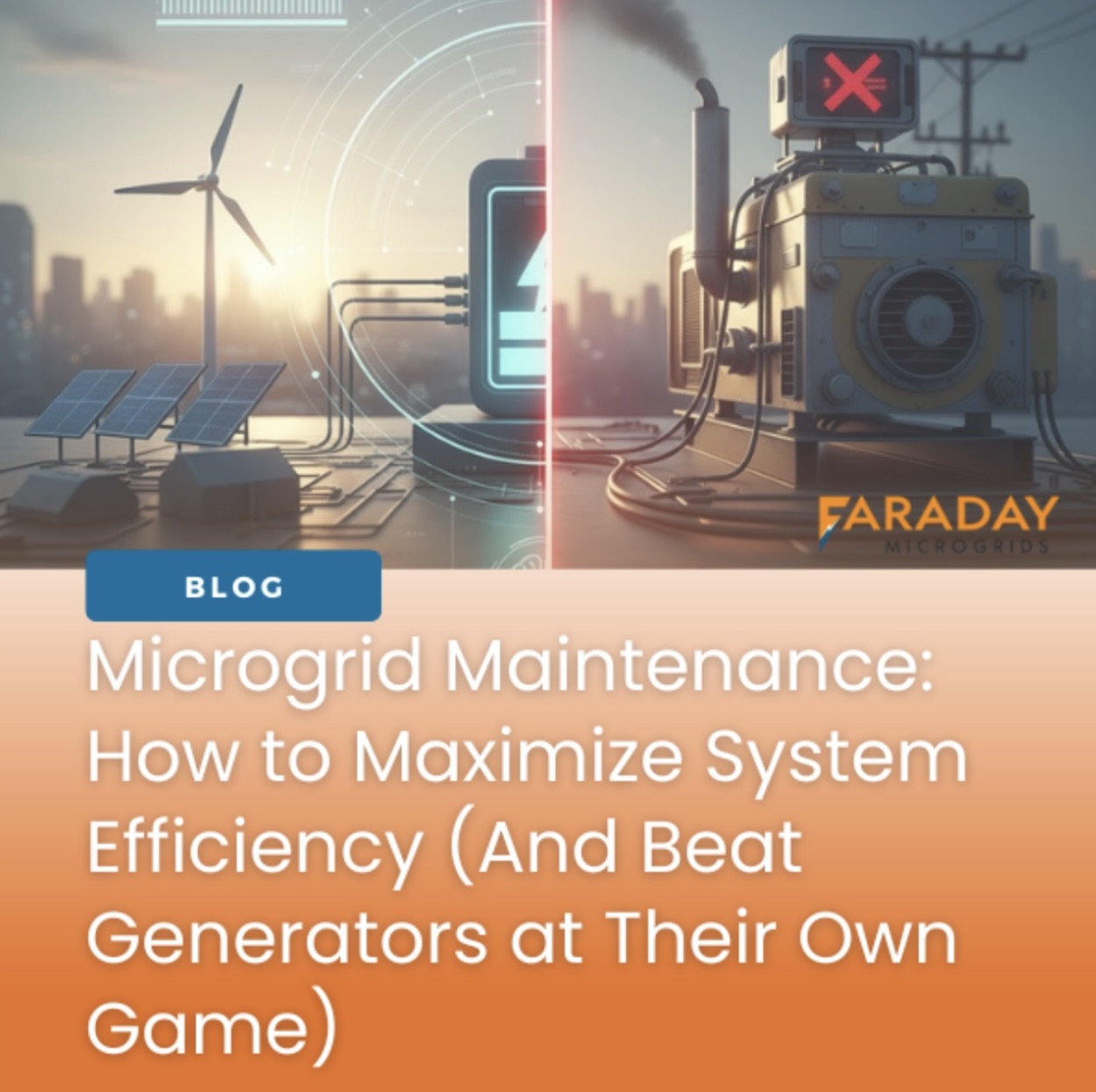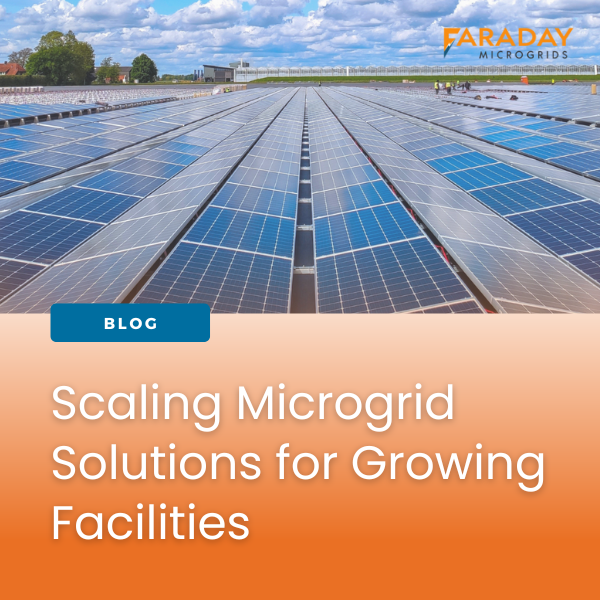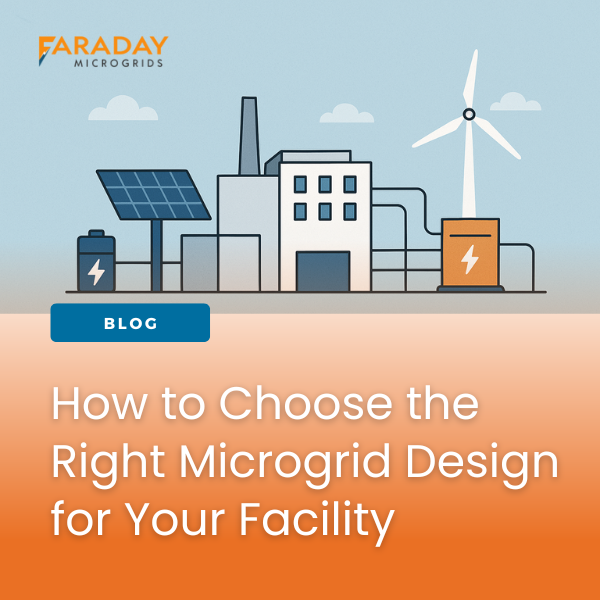What Is a Microgrid?
A microgrid is an independent energy source that can be used to power local facilities independently of a consumer-utilized electrical grid. By design, a microgrid is a combination of renewable energy generation combined with energy storage and SMART controls. The most common type of microgrid is solar and battery.
A microgrid’s function is to maximize onsite renewable resources in order to provide continuous power to a facility, regardless of inclement weather, power outages, or compromised electrical grids.
By acting as an independent power source, a microgrid places the facility it serves on the path to total energetic self-sufficiency.
What Are the Benefits of a Microgrid?
Reduce Energy Bills
By storing solar energy in an energy storage system, a microgrid can determine and control the optimal times to utilize stored power.
Here’s an example: many homeowners understand that running their sprinkler system between the peak hours of noon and 4pm often results in a significantly higher water bill, due to skyrocketing water prices during peak usage time.
Similarly, a microgrid can hold onto energy for hours, allowing your facility to expend stored energy during peak hours without being subject to higher usage prices. In this way, a microgrid can maximize the energy savings for your business.
Operate Independently of Power Outages
Nearly everyone knows the deep frustration of being unable to work, answer emails or continue meetings due to an unexpected mid-day power failure. Faraday’s ‘islanding’ capable microgrids continue operating during utility power outages to keep your facility operating and your business running – even during severe weather or downed lines.
Different Types of Microgrids
Solar energy microgrids are by far the most popular form of energy conservation technology, and come in multiple forms.
- Ground mount is widely considered to be the most cost effective form of microgrid, but takes up a lot of space. Be sure your facility has a sizeable amount of surface area to devote to installation for this option.
- Roof mount is the middle-of-the-road option in terms of investment, but installation is limited by roof availability. Facilities such as warehouses, factories, and conjoined buildings (hospitals, university campuses) are the best candidates for this type of installation.
- Carport mount is the most expensive microgrid option, but provides the added benefit of adding valuable shade for your parking lots. This amenity is a wonderful choice for long-term parking lots and airports.
Not seeing an option that suits your facility? Additional installation options are available.
How Does a Microgrid Store Energy?
Most commonly, batteries are used to store energy in a microgrid for a prolonged period of time. This allows facilities to eliminate the utilization of peak hour energy prices and instead rely on pre-stored energy, which in turn drives down facility bills and reduces their carbon footprint.
There are various technology options available for battery storage, but the most commonly known/used is lithium ion.
Different technologies have different benefits and their selection can be based around the specific needs and space availability of your facility. Unsure which option suits you best? The experts at Faraday can help.
Factors to Consider When Selecting Your Microgrid Technology
Questions to ask yourself when preparing to invest in microgrid technology:
- What are my short duration vs long duration needs? (AKA, how much resilience do I want?)
- What are the energy needs of my facility? (Not sure? Faraday will analyze your historical load data to recommend the best option!)
- How much space is available at my facility? (This will help determine your installation options.)
Final Thoughts: What to Watch Out For
Microgrid controllers are what coordinate the functions of the entire system. Also known as ‘the brain of the microgrid’, these controllers manage the energy flow from all connected resources. It also determines the optimal time to discharge your stored energy sources.
Faraday’s controller can keep your system operating, even when the utility goes down. This is what is called “islanding” – operating independently of a public electrical grid.
Be wary of certain renewable energy companies – majority of controllers do not offer “islanding” capabilities. This feature is critical to providing resiliency to your facility and keeping your building operating, even when everything around you goes dark.
Faraday’s expertise allows us to customize your microgrid solution for size, technology, and operation to meet the needs of your business.
Talk to an expert today and schedule an appointment to have your facility analyzed for FREE.






